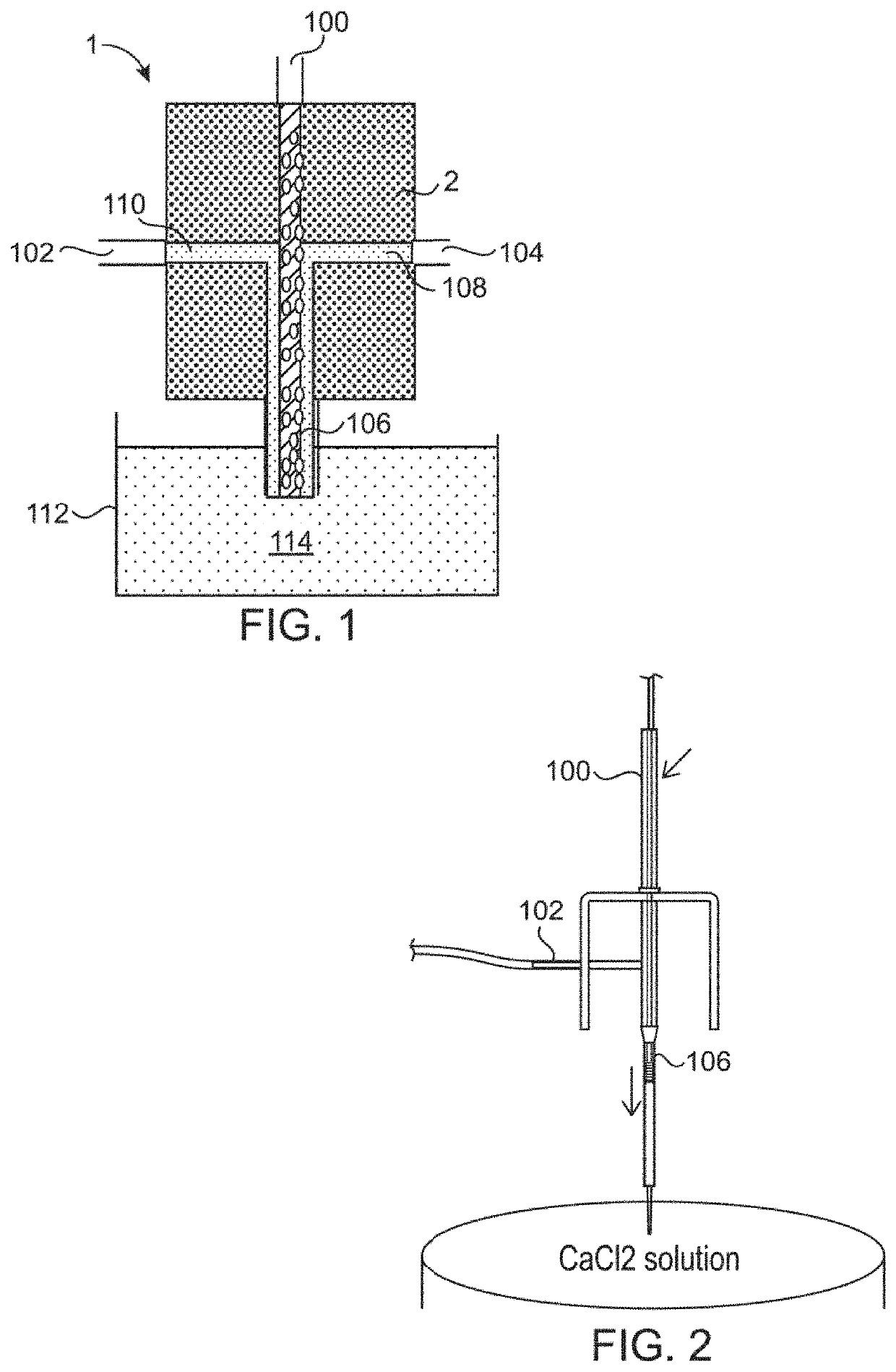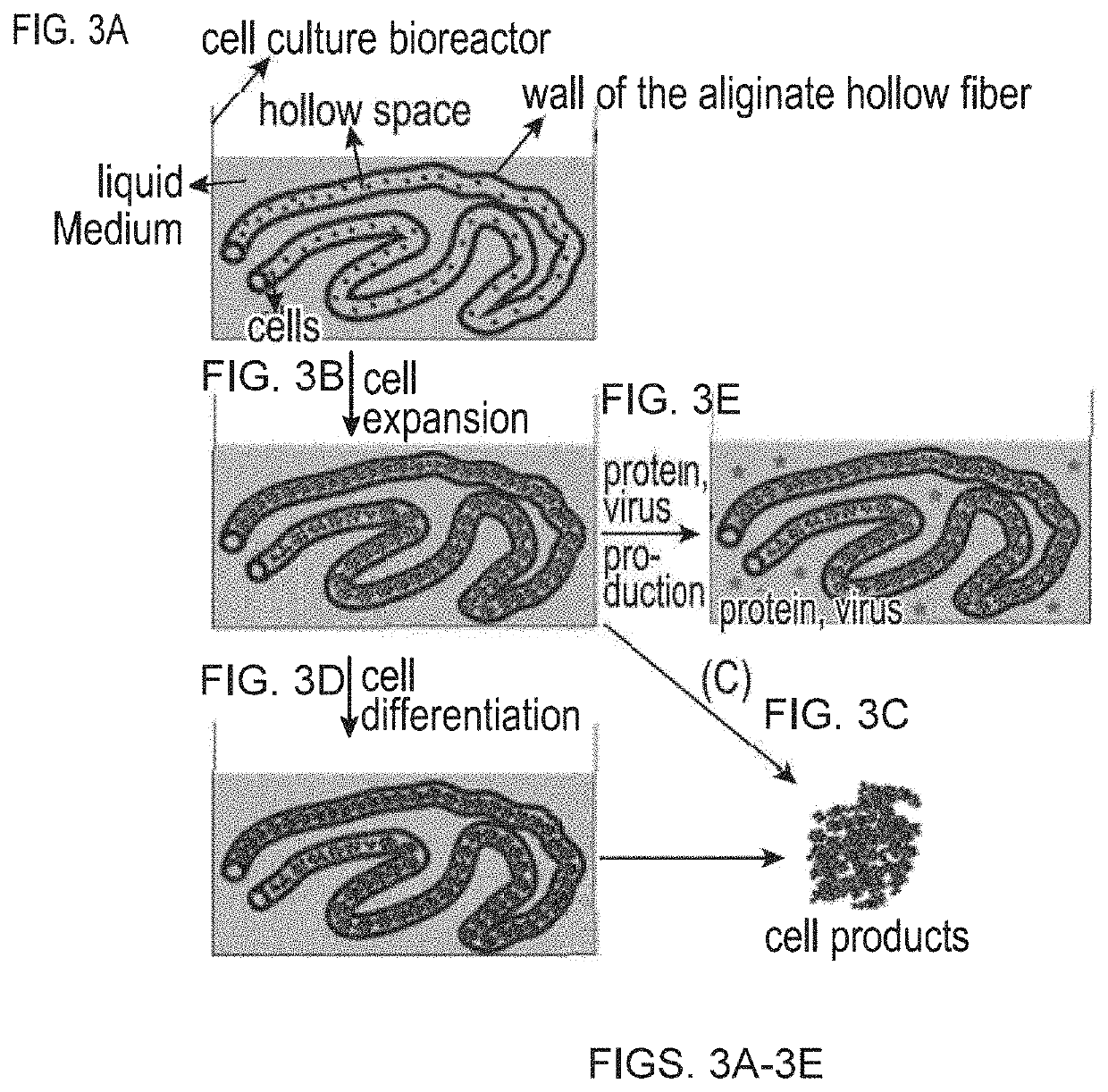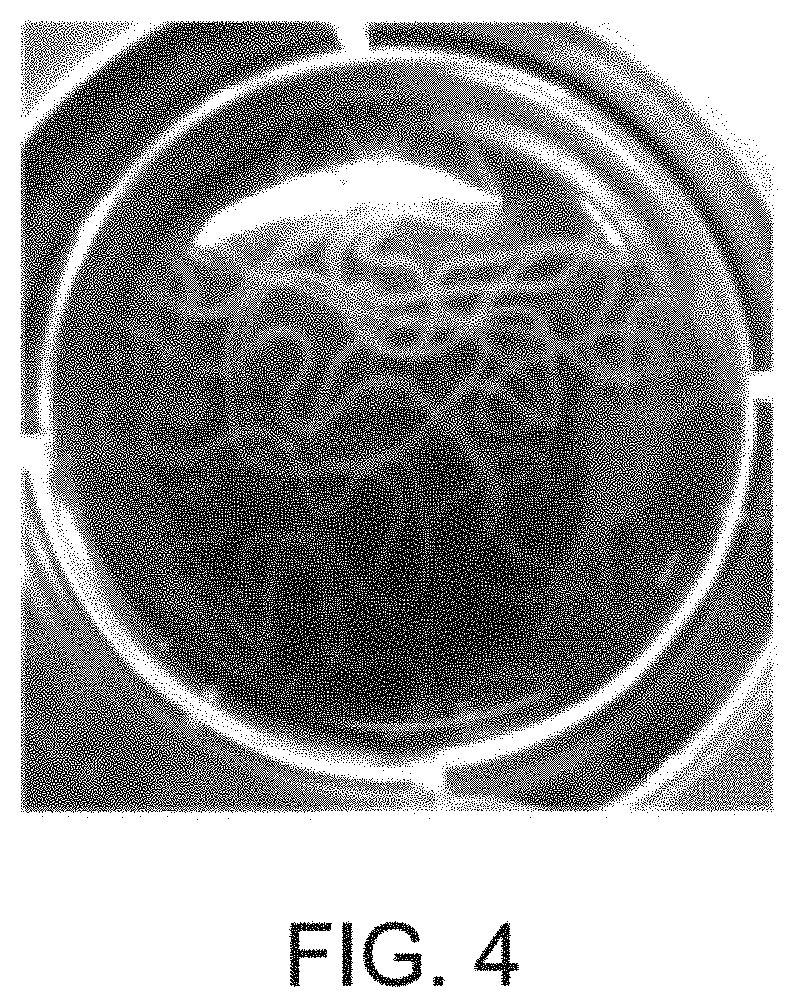Large scale cell manufacture system
a cell manufacturing and large-scale technology, applied in 3d culture, tumor/cancer cells, skeletal/connective tissue cells, etc., can solve the problems of low culture yield and subsequent in vivo survival of transplanted cells, few methods that can cost-effectively manufacture stem cells, and insufficient cell culture yield. , to achieve the effect of reducing the cost of stem cell manufacturing, improving the quality of life and reducing the cost of production
- Summary
- Abstract
- Description
- Claims
- Application Information
AI Technical Summary
Benefits of technology
Problems solved by technology
Method used
Image
Examples
example 1
[0057]In this Example, expansion and growth of human pluripotent stem cells, including human embryonic stem cells (hESCs) and human induced pluripotent stem cells (human iPSCs) in hollow fibers were analyzed over 8 days.
[0058]Single human embryonic stem cells (H9, WiCell) (FIG. 5A) or induced human pluripotent stem cells reprogrammed from human mesenchymal stem cells (MSC-iPSCs) (FIG. 5B) or from human skin fibroblasts (Fib-iPSCs) (FIG. 5C) were suspended in Essential 8 Medium (Life Technology) containing 0.5% (w / v) hyaluronic acid (Lifecore Biomedical) at a density of 1×106 cells / ml. Sodium alginate was dissolved in 0.9% (w / v) saline to reach a concentration of 1.2% (w / v) alginate and autoclaved. With an extruder (see e.g., FIGS. 1 and 2), 10 ml of cell solution and 10 ml of alginate solution were extruded into the 100 ml of sterile buffer containing 100 mM CaCl2 at room temperature to form alginate hollow fibers with cells suspended in the hollow space. The fibers were crosslinked...
example 2
[0059]In this Example, hollow alginate fibers including human iPSCs as made in Example 1 were differentiated into cortical neurons and dopaminergic neurons within the fibers.
[0060]Human MSC-iPSCs were allowed to expand in the hollow fibers for 5 days. The Essential 8 Medium was then replaced with home-made and chemically defined neuronal differentiation mediums and then differentiated into cortical and dopaminergic neurons within the alginate hollow fibers for 30 days. Results are shown in FIGS. 6A-6F. As shown in FIGS. 6C and 6F, immunostaining on day 30 indicated that the majority of human iPSCs were differentiated into corresponding neurons.
example 3
[0061]In this Example, human glioblastoma stem cells were cultured in hollow fibers.
[0062]Three cancer stem cell lines, L0, L1 and L2, isolated from human glioblastoma were cultured in the hollow fibers. Single cells were suspended in NeuroCult medium (Stem Cell Technology) containing 0.8% (w / v) hyaluronic acid (Lifecore Biomedical) at a density of 0.5×106 cells / ml. Sodium alginate was dissolved in 0.9% (w / v) saline to reach a concentration of 1.5% (w / v) alginate and autoclaved. With an extruder (see e.g., FIGS. 1 and 2), 10 ml of cell solution and 10 ml of alginate solution were extruded into the 100 ml of sterile buffer containing 100 mM CaCl2 at room temperature to form alginate hollow fibers with cells suspended in the hollow space. The fibers were crosslinked in the CaCl2 solution for 10 minutes at room temperature. The CaCl2 solution was removed and replaced with NeuroCult medium. Cells were cultured in the hollow fibers suspended in the medium in a regular cell culture incuba...
PUM
| Property | Measurement | Unit |
|---|---|---|
| inner diameter | aaaaa | aaaaa |
| thickness | aaaaa | aaaaa |
| thickness | aaaaa | aaaaa |
Abstract
Description
Claims
Application Information
 Login to View More
Login to View More - R&D
- Intellectual Property
- Life Sciences
- Materials
- Tech Scout
- Unparalleled Data Quality
- Higher Quality Content
- 60% Fewer Hallucinations
Browse by: Latest US Patents, China's latest patents, Technical Efficacy Thesaurus, Application Domain, Technology Topic, Popular Technical Reports.
© 2025 PatSnap. All rights reserved.Legal|Privacy policy|Modern Slavery Act Transparency Statement|Sitemap|About US| Contact US: help@patsnap.com



